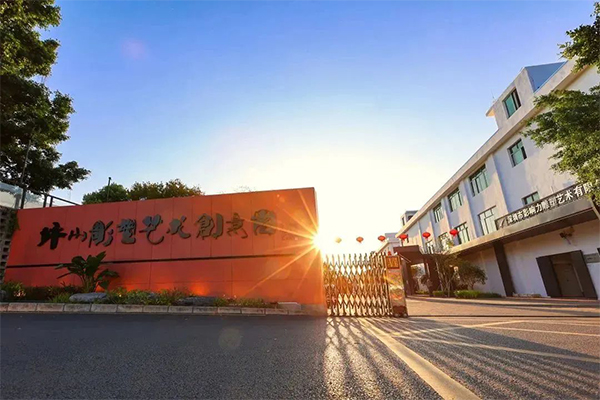 Itinerary
ItineraryShenzhen Metro Line 16 has 24 stations. Known as the “Hakka Culture Inheritance Line,” the line passes through several Hakka landmarks in Pingshan District.
Pinghuan Station
A 20-minute walk from this station, visitors can admire public art at Pingshan Sculpture Creative Park at the foot of Maluan Mountain. Covering 30,000 square meters, the park with litchi and waxberry trees is a multifunctional place for holding conferences, catering and art training.

Pingshan Sculpture Creative Park. Photo from the park
Visitors can also walk from this station to the Dawan Ancestral Residence, a famous Hakka compound built in 1791, and two book rooms. Dawan Ancestral Residence Book Room is located inside Dawan Ancestral Residence and Dawan Mingxin Book Room is adjacent to Dawan Ancestral Residence. The Mingxin book room used to be a school built in 1927.

Dawan Ancestral Residence. Photo by Liu Xudong
Pingshanwei Station
Passengers can transfer to Metro Line 14 via this station. Walk 800 meters southwest from this station, one will find Wenwu Temple, which was built in the late Qing Dynasty (1644-1911). This 512-square-meter temple complex was originally used by Hakka people to honor Wenchang Wang, the god of literature and culture, and the ancient general Guan Yu, whose martial prowess was so extraordinary that he was deified as a god after his death. With the old architecture preserved, the temple has been repurposed as a division of Pingshan Book Rooms for locals to read books and hold cultural events.

Wenwu Temple in Pingshan District. Photo from Eastern Cultural
Tianxin Station
This station is very close to Nanzhong School, which was built in 1931. White walls, green tiles, cornices and carved pillars reflect a distinctive Southeast Asian architectural style. The school was originally built for children in two local villages. Unlike other schools in those days, Nanzhong School accepted girls and even married women as students in the early 20th century. In 2018, it was renovated by Pingshan District into one of the district’s community libraries.

Nanzhong School in Pingshan District. Photo from Eastern Cultural
Pingshan Station
From this station, passengers can go directly to Shenzhen Pingshan Railway Station to take a high-speed train to other cities or take SkyShuttle Line 1, an elevated rail line, to nearby companies, such as BYD and SMIC.

Shenzhen Pingshan Railway Station. Photo by Sun Yuchen
Yanzihu Station
A 15-minute walk from this station, fair-goers can get to Yanzi Lake International Convention and Exhibition Center. Covering 87,000 square meters, the center is an exhibition and convention complex integrating exhibitions, conferences, catering and events. Fair-goers can enjoy additional comfortable services at the Grand Skylight International Hotel Pingshan located next to the center.

Yanzi Lake International Convention and Exhibition Center. Photo from Shenzhen Evening News
Dongjiang Column Memorial Hall Station
The station is near the Dongjiang Column Memorial Hall built in 2000 in Pingshan to display historical documents, photos, veterans’ paraphernalia and a monument inscribed with thousands of martyrs’ names. Two 200-year-old houses have also been preserved. The Dongjiang Column of Guangdong People’s Guerrilla Force Against Japanese Aggression had participated in revolutionary battles in the 1930s-1940s. Walking southward for 20 minutes from this station, one can also arrive at the BYD headquarters.

Dongjiang Column Memorial Hall. Photo by Yang Shaokun
Technology University Station
This station is next to Shenzhen Technology University. If visitors take a short northbound bus or taxi trip, they can then relax at Pingshan Wetland Park and Julong Mountain Ecology Park.

A glance at Shenzhen Technology University. Photo by Sun Yuchen
Some stations are near shopping malls and supermarket, such as Holiday World and Vanguard near Liuhe Station, and Rainbow Supermarket (Longping) near Xinhe Station.

The entrance to Holiday World in Pingshan District. Photo by Cao Zhen